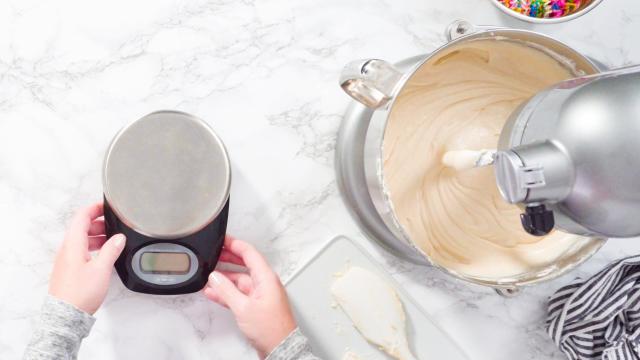Measuring your ingredients by mass is far more accurate and reproducible than measuring your ingredients by volume. This is especially helpful during baking, which leans a little more heavily on chemical reactions than mere cooking.
Weighing ingredients is very easy: Just place a container on the scale, tare the scale, then scoop or pour the ingredient into the container until you reach your desired mass. Dump it in the mixing bowl, repeat with your remaining ingredients. It is simple enough, but a new weighing method has entered the chat — via TikTok, of course — and she may be slightly more elegant than the “normal” way.
It’s called “reverse taring” and it’s extremely efficient, especially if — like our senior health editor, Beth Skwarecki, you’re the kind of person who hates getting out an extra bowl to act as your weighing vessel. Instead of placing a bowl on the scale, taring, and then weighing your ingredient in that bowl, you place the ingredient on the scale (in its original container or packaging), tare the ingredient, then add the ingredient directly to the mixing bowl until you hit the negative of your target weight. (If for example, you wanted 100 grams of flour, you would pour or scoop flour into your mixing bowl directly from the flour bag until the scale read “-100 g.”)
Honestly the chemistry major inside me (who is mostly dead) was initially mildly horrified by this method. I learned that weighing anything directly into your reaction vessel is a forbidden practice before I even got to orgo, but we’re making cakes, not OLEDs. When I brought this up to Beth, who is far more scientifically rigorous in her day-to-day life than I am, she pointed you can prevent overshooting your target mass through the clever use of spoons: “When I do it with yogurt, I scoop the yogurt into the spoon, look at the scale display, then if I have to put some yogurt back into the container I do,” she explained to me over Slack.
Why not put your mixing bowl directly onto the scale, instead of dealing with all this reverse number business? Well, sometimes it’s just not feasible to put your reaction vessel directly on the scale, especially if it’s attached to a stand mixer. Beth and A.A. Newton (who also majored in chemistry and does far more baking than I do), discussed this detail over Slack before I even logged on this morning, and made some good points:
Beth: Oh I love doing this [reverse taring], I bought my scale specifically because it can do this (my old one can’t). Beware that commenters will say BUT YOU CAN JUST WEIGH THE THING YOU’RE PUTTING IT INTO.
A.A.: yes you can but this way is just as easy and works in 100% of situations instead of 90%????? (counting stand mixer usage as 10% here).
Beth: Stand mixer, blender, pot on a stove, large bowl too big to fit on the scale.
A.A.: that’s at least 40%!!!! yes i’m making up numbers!!!
Actual percentages aside, their discussion won me over. It may go against my mostly-dormant chemist’s instincts, but it’s a good method, especially if, like Beth, you “don’t like to use an extra bowl” because you are “lazy.” (Beth is not lazy. Beth is efficient.)

Leave a Reply
You must be logged in to post a comment.